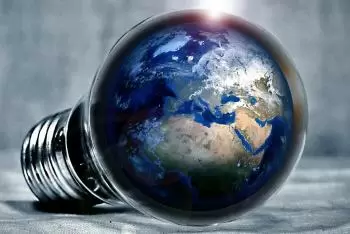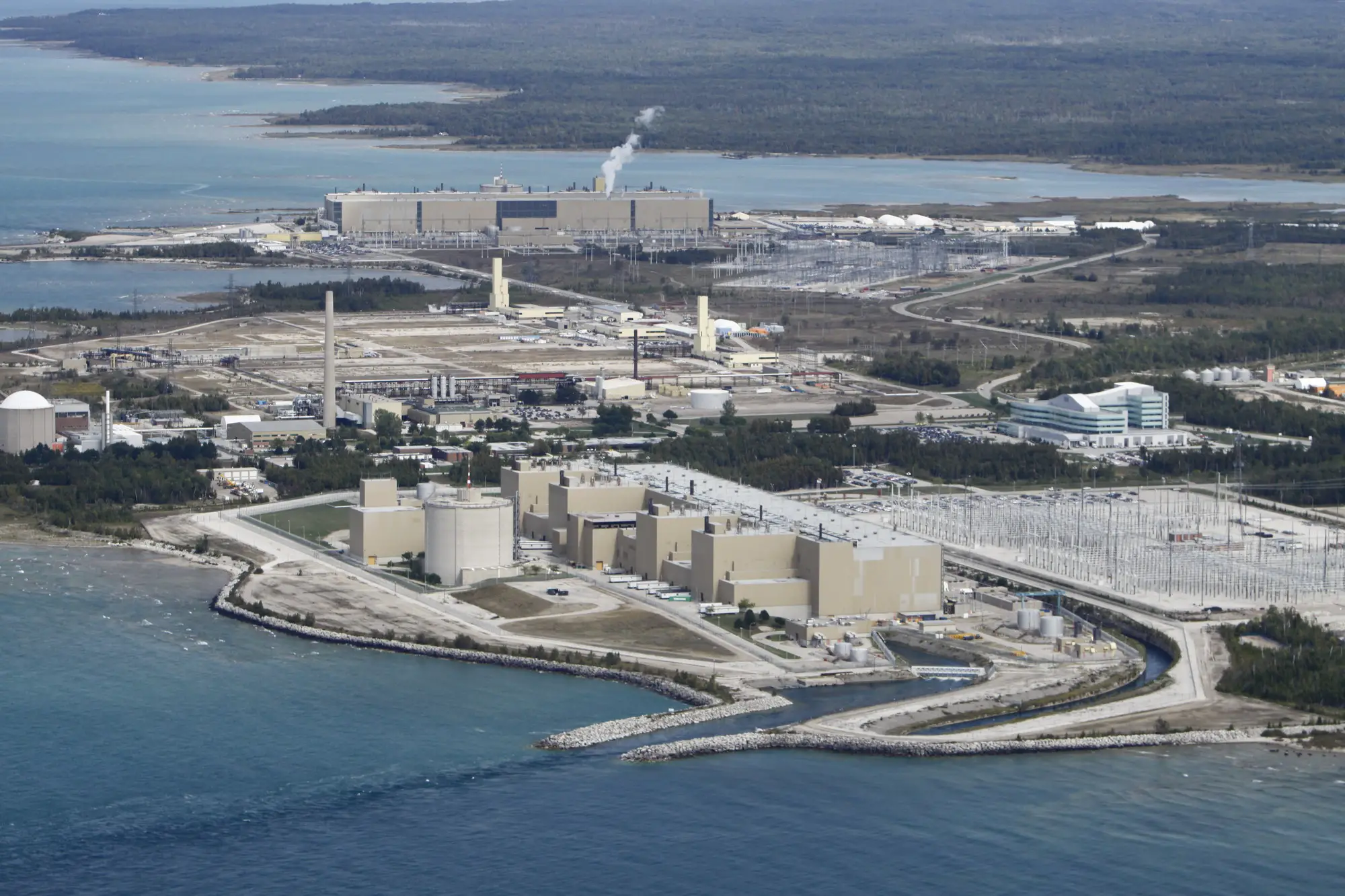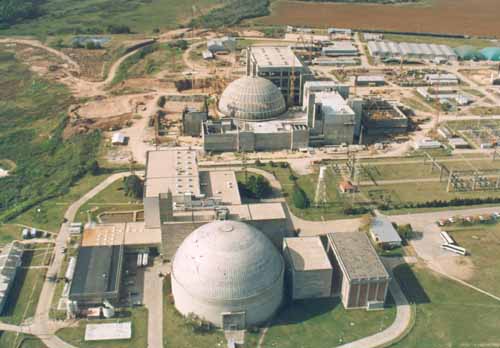
Nuclear energy began to be developed during the first decade of the 1940s. Initially, the goal was to create and produce the atomic bomb. Later, after the Cold War, research began on other uses of nuclear energy; The research focused on the peaceful use of atomic energy.
Currently, 30 countries have nuclear power plants for electricity generation. In any case, the number of countries that take advantage of nuclear energy is much greater since countries like Denmark and Italy, which do not have any atomic facilities, obtain around 10% of their electricity from atomic energy imported from other countries.
About 450 nuclear power reactors are operating around the world. All these reactors together generate around 11% of the electrical energy consumed in the world. However, 60 more reactors are currently being built, which would increase the power generated through nuclear energy by 16%.
In 2016, nuclear power plants supplied 2,477 TWh of electricity, compared to 2,441 TWh in 2015.
What are the main sources of electricity?
According to IEA Electricity Information data from 2017, the main source of electricity generation was coal. Coal-fired power plants are the most used and in second place are gas-fired power plants.
The list of electricity sources ordered by use is as follows:
|
Power source |
Global electrical energy use |
|
Coal-fired power plants |
39.3% |
|
Gas power plants |
22.9% |
|
Hydroelectric power |
16% |
|
Nuclear energy |
10.6% |
|
Other renewable energies (solar energy, wind energy and geothermal energy) |
4.9% |
|
burning oil |
4.1% |
|
Other sources |
2.2% |
It implies that non-renewable energies continue to have a majority weight in electricity generation compared to renewable energies worldwide.
Countries with nuclear power plants
The countries producing nuclear energy are:
France, China, Russia, South Korea, Canada, Ukraine, Germany, United Kingdom, Sweden, Spain, Belgium, India, Czech Republic, Finland, Switzerland, Japan, Brazil, Bulgaria, Hungary, South Africa, Slovakia, Mexico, Romania, Argentina, Iran, Pakistan, North Korea, Slovenia, Netherlands and Armenia.
In the ranking of countries with the highest electricity production through nuclear power plants, we find the United States in first position, which in 2016 generated 805 TWh.
World Nuclear Association: international organization
The World Nuclear Association is an international organization that brings together companies and actors in the nuclear industry from around the world to promote and support the safe and sustainable use of nuclear energy.
This association plays a critical role in being a unified voice for the nuclear industry, advocating for its role in mitigating climate change and meeting global energy needs.
In addition, the World Nuclear Association works to promote safety standards, share good practices and provide objective and up-to-date information on nuclear energy, thus contributing to an informed debate on this energy source.
The organization brings together companies spanning all stages of the nuclear fuel cycle, from mining to power generation, and plays a key role in collaborating with governments and regulators on nuclear energy issues.
Its role is to provide leadership and guidance on issues related to nuclear energy, advocating for its responsible and safe use in a context of global energy needs and environmental concerns.
Nuclear energy in North America
The Americans built the world's first nuclear reactor. It was part of the Manhattan Project to build the atomic bomb.
After World War II, scientists who worked on the Manhattan Project founded The Federation of American Scientists. It was a nonprofit global policy think tank with the stated intention of using science and scientific analysis to make the world safer. FAS aims to reduce the number of nuclear arsenal weapons in the world.
Nuclear power plants in the United States
The United States has 99 operable nuclear fission reactors, with a combined net capacity of 99.6 GWe.
In 2017, nuclear energy generated 20% of the country's electricity. Four AP1000 reactors have been built, but two of them have been stopped. One of the reasons for the pause in new construction in the United States has been the successful evolution of maintenance strategies.
Nuclear power plants in Canada
 Canada has 19 nuclear reactors in operation, with a combined net capacity of 13.5 GWe. In 2017, nuclear energy generated 15% of the country's electricity.
Canada has 19 nuclear reactors in operation, with a combined net capacity of 13.5 GWe. In 2017, nuclear energy generated 15% of the country's electricity.
In the first part of 2016, the government signed the necessary contracts to renew and extend the useful life of six reactors at the Bruce plant. The program will extend the operational life by 30 to 35 years.
Number of nuclear power plants in Mexico
Mexico has two operable nuclear reactors, with a combined net capacity of 1.6 GWe. In 2017, nuclear energy generated 6% of the country's electricity.
Nuclear energy in South America
 Argentina has three reactors, with a combined net capacity of 1.6 GWe (gigawatts of electricity). In 2017, the country generated 5% of its electricity from nuclear energy.
Argentina has three reactors, with a combined net capacity of 1.6 GWe (gigawatts of electricity). In 2017, the country generated 5% of its electricity from nuclear energy.
Brazil has two reactors, with a combined net capacity of 1.9 GWe. In 2017, nuclear energy generated 3% of the country's electricity.
Nuclear power plants in Western and Central Europe
The list of countries that have atomic reactors are:
|
Country |
Number of reactors |
Net capacity |
Country's electricity production |
Year |
|
Belgium |
7 |
5.9 GWe |
fifty% |
2017 |
|
Finland |
4 |
2.8 GWe |
33% |
2017 |
|
France |
58 |
63.1 GWe |
72% |
2017 |
|
Germany |
7 |
9.4 GWe |
12% |
2017 |
|
The Netherlands |
1 |
0.5 GWe |
3% |
2017 |
|
Spain |
7 |
7.1 GWe |
twenty-one% |
2017 |
|
Sweden |
8 |
8.4 GWe |
40% |
2017 |
|
Swiss |
5 |
3.3 GWe |
33% |
2017 |
|
United Kingdom |
fifteen |
8.9 GWe |
19% |
2017 |
A 2015 energy policy aimed to reduce France's share of nuclear generation to 50% by 2025. In November 2017, the French government postponed this goal.
Germany is phasing out nuclear generation around 2022 as part of its Energiewende policy. Energiewende, widely identified as the most ambitious national climate change mitigation policy, has significantly reduced carbon dioxide emissions.
Sweden is closing some older reactors, but has invested heavily in life extensions and improvements.
Nuclear power plants in Eastern Europe and Russia
The list of countries that have atomic reactors are:
|
Country |
Number of reactors |
Net capacity |
Country's electricity production |
Year |
|
Russia |
35 |
26.9 GWe |
18% |
2017 |
|
Armenia |
1 |
0.4 GWe |
33% |
2017 |
|
Bulgaria |
2 |
1.9 GWe |
3. 4% |
2017 |
|
Czech Republic |
6 |
3.9 GWe |
33% |
2017 |
|
Hungary |
4 |
1.9 GWe |
fifty% |
2017 |
|
Romania |
2 |
1.3 GWe |
18% |
2017 |
|
Slovakia |
4 |
1.8 GWe |
54% of |
2017 |
|
Slovenia |
39% |
2017 |
||
|
Ukraine |
fifteen |
13.1 GWe |
55% |
2017 |
In Russia, a government decree in 2016 specified the construction of 11 nuclear power reactors by 2030 and those already under construction. As of early 2018, Russia had seven reactors under construction, with a combined capacity of 5.9 GWe.
Belarus has its first nuclear power plant under construction and plans to have two Russian reactors operational by 2019. Today, almost all of the country's electricity is produced from natural gas.
Nuclear power plants in Asia
The list of countries that have nuclear reactors in Asia are:
|
Country |
Number of reactors |
Net capacity |
Country's electricity production |
Year |
|
porcelain |
38 |
34.6 GWe |
4% |
2017 |
|
India |
22 |
6.2 GWe |
3% |
2017 |
|
Japan |
42 |
40 GWe |
4% |
2017 |
|
South Korea |
24 |
22.5 GWe |
27% |
2017 |
|
Pakistan |
5 |
1.4 GWe |
6% |
2017 |
The Indian government is committed to increasing its nuclear power capacity as part of its massive infrastructure development programme.
In Japan, as of early 2018, only five reactors had been brought back online, with 21 more in the reapproval process following the Fukushima nuclear accident in 2011. In the past, 30% of the country's electricity came from nuclear.
Bangladesh began construction of the first of two planned VVER-1200 reactors in 2017. It plans to have the first unit operational in 2023. Currently, the country produces virtually all of its electricity from fossil fuels.
Nuclear energy in Africa
South Africa has two operating nuclear reactors and is the only African country currently producing electricity from nuclear energy. In 2017, nuclear energy generated 7% of the country's electricity.
Iran has only one operable nuclear reactor with a net capacity of 0.9 GWe. In 2017, nuclear energy generated 2% of the country's electricity.
The UAE is building four 1,450 MWe South Korean reactors at a cost of more than $20 billion and is working closely with the International Atomic Energy Agency and experienced international firms.